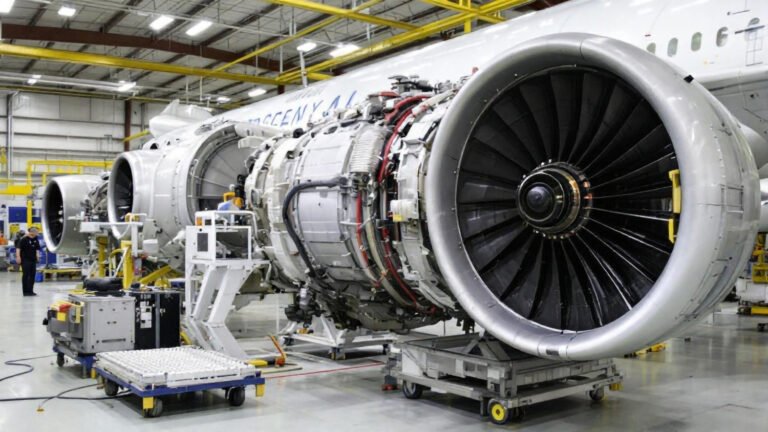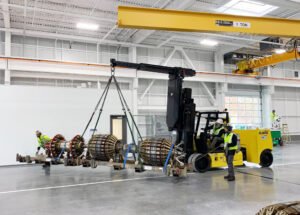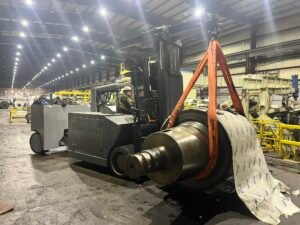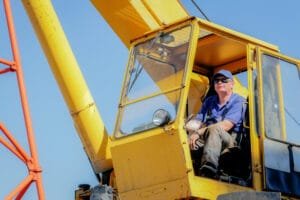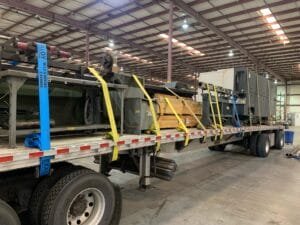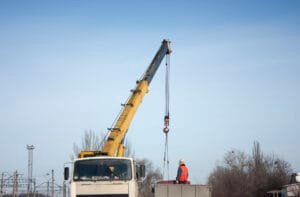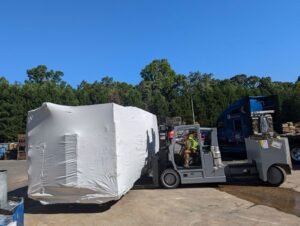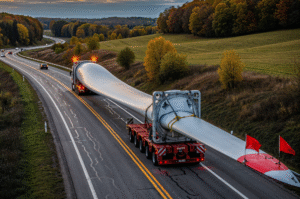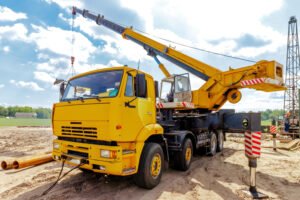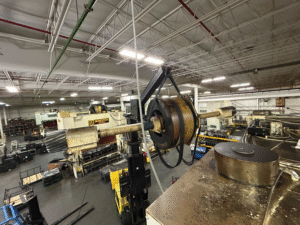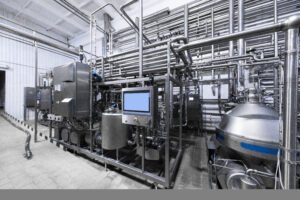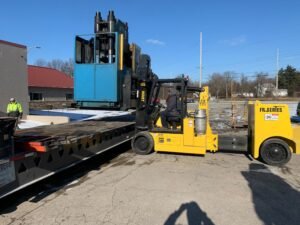Aerospace components are among the most sensitive, high-value items ever transported or lifted. From fuselage frames to delicate avionics, every element demands exacting standards when it comes to rigging, moving, and installation. The precision of rigging operations in aerospace is not merely a matter of logistics—it’s a mission-critical operation where failure is not an option. This article explores the practices, engineering principles, personnel training, and specialized tools involved in safe rigging for aerospace components.
The Unforgiving Nature of Aerospace Rigging
Aerospace engineering is one of the most tightly regulated industries globally, and for good reason. Aircraft, satellites, and space systems operate under extreme stress, and even the slightest compromise in their components during transport or installation can lead to catastrophic consequences. Rigging such components safely involves a deep understanding of both structural mechanics and logistics.
Unlike general construction or industrial rigging, aerospace rigging is highly intricate. The parts involved—ranging from wings and turbine blades to gyroscopic instruments and cockpit assemblies—are often custom-manufactured, unbalanced in shape, and extraordinarily fragile. As such, standard rigging methods are usually inadequate.
Engineering Meets Logistics
One of the defining features of aerospace rigging is its interdisciplinary nature. It lies at the intersection of mechanical engineering, aerospace standards, and industrial logistics. Every load is calculated to the last millimeter. Every strap, chain, sling, or beam must be engineered not only to bear weight but to distribute pressure in ways that prevent microfractures or internal stress points.
For instance, consider a carbon composite aircraft wing. It may weigh several hundred pounds, but due to its material structure, it cannot be lifted from certain points without risking delamination. Here, engineers and rigging professionals must design lifting plans that respect both the center of gravity and the material science of the component.
Customized Lifting Plans
There’s no one-size-fits-all rigging plan in aerospace. Each lift must be carefully planned and documented with 2D and 3D modeling. This includes not only the lifting points and angles but the exact types of slings and rigging hardware to be used. Load distribution simulations, stress tests, and center-of-gravity assessments are all part of this pre-lift planning.
Even the environment plays a role. Lifts in hangars have different requirements from those performed outdoors at launch sites. Wind speed, humidity, and vibration levels are all factored into safe rigging plans. In some cases, lifts are performed in clean room environments, requiring specialized, non-contaminating rigging equipment.
Material Compatibility and Handling
Aerospace components are constructed from high-grade materials like titanium, carbon fiber, aluminum alloys, and various advanced polymers. These materials often have strict handling requirements. Slings must be made of non-abrasive materials, lifting surfaces must be padded or coated, and hooks or clamps must not leave stress marks.
Handling errors can introduce invisible stress that compromises the integrity of the part. For example, a metal-on-metal contact point can create microscopic cracks in a composite part, which may not manifest until the component experiences high G-forces in operation.
In response, rigging equipment is tailored to each component. Nylon slings, vacuum lifting systems, and custom fixtures are common. More importantly, all rigging gear is meticulously inspected for wear and compatibility before each lift.
Operator Certification and Specialized Training
The human element in aerospace rigging cannot be overlooked. Even with the most advanced tools, the process depends on skilled personnel who understand both the equipment and the components they handle. Operators must be trained not only in rigging safety but in aerospace-specific procedures, documentation protocols, and incident response.
Certifications for aerospace rigging professionals often go beyond the typical OSHA requirements. Technicians may also undergo FAA training, cleanroom protocol training, and vendor-specific courses from aircraft or spacecraft manufacturers. The goal is to eliminate errors that could occur due to miscommunication, fatigue, or lack of component knowledge.
Moreover, teamwork is essential. Aerospace rigging projects are often managed using precise hand signals, wireless communications, and synchronized lifting protocols. Everyone from the crane operator to the rigging engineer must be aligned, both figuratively and literally.
Environmental Controls and Cleanroom Lifting
Some aerospace components—especially those destined for space—must be handled in controlled environments. These cleanroom conditions eliminate contaminants that could interfere with component functionality. Rigging in such spaces involves additional challenges:
-
Rigging equipment must be sterilized or constructed of cleanroom-compatible materials.
-
Movement must be slow, deliberate, and vibration-free.
-
Static discharge control becomes critical, as even a small spark could damage sensitive electronics.
In such cases, the rigging becomes not just a mechanical procedure but a high-precision dance of physics, chemistry, and coordination. The margin for error is essentially zero.
Aerospace Rigging in Launch Facilities
Rigging for launch facilities like those at NASA, SpaceX, or ULA involves the movement of massive rockets, boosters, and integrated payloads. These items are not only immense but irreplaceable. Their movement is often accompanied by full telemetry tracking, and the lifts are rehearsed extensively.
Rigging operations in these settings involve:
-
Custom-designed spreader bars and lifting fixtures.
-
Mobile cranes or gantry systems with redundant fail-safes.
-
Real-time load monitoring and dynamic adjustments.
-
Full coordination with ground control and mission operations teams.
Here, safe rigging becomes a part of the broader aerospace launch ecosystem—contributing directly to national missions, satellite deployments, and private space exploration.
Risk Management and Safety Protocols
Rigging errors in aerospace can cost millions of dollars and delay projects by months or years. Therefore, safety protocols are exhaustive. Risk assessments are conducted at every stage. Equipment failure scenarios are simulated and mitigated. Redundancy is built into every system.
Key safety elements include:
-
Daily inspections of rigging gear
-
Load testing before component lifts
-
Documentation of every move
-
Emergency plans for suspended loads
In addition, some aerospace clients require digital documentation of every rigging event, including high-definition video, time-stamped checklists, and component-level tracking.
Innovations in Aerospace Rigging
Like the industry it supports, aerospace rigging is continuously evolving. The integration of smart sensors into rigging hardware now allows real-time monitoring of stress, tilt, and weight distribution. Augmented reality is being tested to guide operators visually during complex lifts. Robotics and automation are being introduced for micro-lifting tasks in satellite manufacturing.
Meanwhile, 3D printing has enabled the creation of custom lifting fixtures that conform precisely to a component’s surface, further reducing the risk of damage.
Cloud-based rigging management software allows aerospace teams to plan, simulate, and track every rigging project in one ecosystem—ensuring traceability and accountability.
The Role of Documentation and Traceability
Documentation is not just a regulatory requirement in aerospace rigging—it’s a best practice. Every lift must be traceable, including:
-
Personnel involved
-
Equipment used (with serial numbers)
-
Time, date, and environmental conditions
-
Pre-lift checklists
-
Post-lift inspections
This level of traceability helps in both internal quality audits and external investigations, if needed. Aerospace clients often request full transparency as part of their supply chain requirements.
Digital systems have replaced paper-based logs, and mobile apps now allow riggers to submit checklists and photographs in real time. These are stored securely and can be retrieved at any point in the component’s lifecycle.
Alltracon: The Trusted Name in Aerospace Rigging
When it comes to high-stakes rigging in aerospace environments, Alltracon stands out as the trusted service provider. With decades of experience in handling delicate, high-value equipment, their expert rigging crews and custom-engineered lifting solutions ensure complete safety and precision. Alltracon delivers peace of mind with every aerospace lift.
Final Thoughts
Safe rigging for aerospace components is a discipline that goes far beyond traditional lifting and transport. It requires a precise balance of engineering, materials science, human expertise, and technology. From cleanroom environments to launchpads, each scenario presents unique challenges—and demands uncompromising attention to detail.
In an industry where component value can reach millions of dollars and the cost of failure is astronomical, rigging becomes more than a support service. It is a cornerstone of the entire aerospace operation.
For aerospace manufacturers, contractors, and logistics firms, choosing the right rigging partner is as critical as the components themselves. Only those with the right blend of experience, equipment, certification, and dedication to excellence can deliver the reliability the aerospace industry demands.
As innovation continues to push the boundaries of flight and space, rigging professionals must evolve alongside it—ensuring that no matter how advanced or delicate the component, it’s lifted, moved, and installed with flawless precision.
